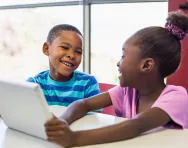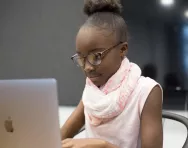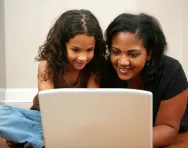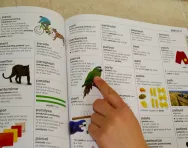Important update from TheSchoolRun
For the past 13 years, TheSchoolRun has been run by a small team of mums working from home, dedicated to providing quality educational resources to primary school parents. Unfortunately, rising supplier costs and falling revenue have made it impossible for us to continue operating, and we’ve had to make the difficult decision to close. The good news: We’ve arranged for another educational provider to take over many of our resources. These will be hosted on a new portal, where the content will be updated and expanded to support your child’s learning.
What this means for subscribers:
- Your subscription is still active, and for now, you can keep using the website as normal — just log in with your usual details to access all our articles and resources*.
- In a few months, all resources will move to the new portal. You’ll continue to have access there until your subscription ends. We’ll send you full details nearer the time.
- As a thank you for your support, we’ll also be sending you 16 primary school eBooks (worth £108.84) to download and keep.
A few changes to be aware of:
- The Learning Journey weekly email has ended, but your child’s plan will still be updated on your dashboard each Monday. Just log in to see the recommended worksheets.
- The 11+ weekly emails have now ended. We sent you all the remaining emails in the series at the end of March — please check your inbox (and spam folder) if you haven’t seen them. You can also follow the full programme here: 11+ Learning Journey.
If you have any questions, please contact us at [email protected]. Thank you for being part of our journey it’s been a privilege to support your family’s learning.
*If you need to reset your password, it will still work as usual. Please check your spam folder if the reset email doesn’t appear in your inbox.
How to help your child spot fake news
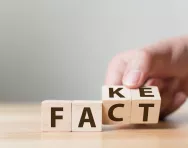
Early in 2019, a flurry of scare stories broke out about the Momo Challenge, where a freaky character would hack into WhatsApp and start setting children dangerous challenges, leading up to self-harm and even suicide. National and global news sources reported on the story, and warnings about the challenge – which was apparently responsible for the death of 130 Russian kids – went viral.
But a few days later, it transpired that the Momo Challenge was a hoax – or fake news, as we might otherwise call it.
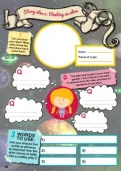
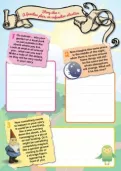
Download a FREE Creative Writing toolkit!
- KS1 & KS2 workbooks
- Bursting with fill-in prompt sheets and inspiring ideas
- Story structure tips, style guides and editing suggestions
In today’s world, children are becoming increasingly ‘digitally literate’, developing the ability to live, work, learn, participate and thrive in a digital society.
A key part of this is being able to identify fake news.
‘As technology evolves, so do the requirements for understanding the new ways in which we receive and share information,’ says Katie Harrison, founder of Picture News, which delivers weekly news-linked assembly plans and resources to schools. ‘Children growing up with instant access to an unmanageable amount of content have to know when and what to believe. They have to question everything.’
Research from the National Literacy Trust suggests that half of UK parents are worried about the impact of misinformation on their children’s lives and don’t think their children have the skills to spot fake news; what’s more, 40% of parents surveyed admitted to falling for fake news themselves.
Why digital literacy matters
‘Many adults assume that children’s ability to handle mobile devices means they are digitally literate, but this is simply not the case,’ say digital literacy experts Sarah Pavey and Elizabeth Hutchinson.
It’s also about the need to evaluate and filter the information they find online, whether that’s on websites, in the news or on social media.
This is an important skill to have as they journey through education and study increasingly independently, ensuring that their research and schoolwork are as accurate as possible.
But it’s not just in the classroom that children need digital literacy and the ability to spot fake news, hoaxes, and offers that are too good to be true.
Out of school, being able to critically evaluate information they find online or in print, or hear by word of mouth, can have an impact on their wellbeing and ensure they won’t be disturbed by scare stories such as the Momo Challenge, or led astray by things they see on social media. Nor will they inadvertently spread false information themselves.
Ideally, the building blocks for digital literacy need to be laid as early as in the Foundation Stage.
‘If it’s done well, children grow up being able to evaluate what they find,’ Sarah and Elizabeth say.
Why developing digital literacy can be tricky
‘Children have to cope with a deluge of information that’s available at their fingertips,’ say Sarah and Elizabeth. ‘But huge amounts of this is poor quality or not understandable by them.’
Part of the problem is that from the very earliest stages of life, kids are taught to believe what adults say.
As they move up through school, they’re often told to research something without ever being taught where to look and how to do it.
Into the teenage years, social media begins to have an impact, too, and with friends often a far bigger influence than authority figures, it’s easy to see how misinformation can spread and go viral.
The different forms of misleading information
Some of the sources of misinformation that your child might encounter include:
- Hoaxes such as the Momo Challenge and the oft-reported stories of celebrity deaths where the person concerned is alive and kicking.
- User-generated ‘factual’ content like Wikipedia – often top of internet searches, and therefore the go-to source for many children.
- News outlets that have a political bias.
- Blogs and vlogs, such as on YouTube, where a person’s opinions are presented as fact.
- Outdated information, for example news stories dating back several years.
- Social media, where people often share stories without checking if they’re true.
Helping your child spot fake news
As adults, it can be difficult to spot fake news, so how can we equip our kids with the skills they need to identify it?
1. Assess the language and structure of websites
Websites that are user-friendly and written in plain English are more likely to be accurate and reliable than those that obscure information with jargon, waffle or hard-to-read fonts and formatting
2. Look at the advertising
Explain to your child how advertising affects the content of a source. Teach them to look out for terms that mean the content may have been influenced by an advertiser, such as ‘advertorial’, ‘sponsored’ or ‘promoted.’
3. Encourage them to use alternative sources
‘It’s important that children are exposed to and experience different types of information, in digital formats and more traditional formats,’ says Katie Harrison. ‘Schools, libraries and books can help with this.’
News sources that are specifically aimed at children are often good places to look for reliable information presented in simple terms, such as educational newspapers like First News and The Week Junior and children's news bulletins like Newsround (which also has a Newsround YouTube channel).
The NewsWise project, launched by The Guardian Foundation, the National Literacy Trust and the PSHE Association and funded by Google, aims to equip children with the skills and knowledge they need to engage with, question and enjoy news. Free NewsWise resources include tips for parents to help support their child’s news literacy at home and the NewsWise Navigator which helps parents and children question news they are unsure about.
4. Teach them to cross-reference
If a story or fact is reported consistently across various websites, publications or books, it’s more likely that it’s accurate. Older children can be taught to compare multiple sources to see whether the information tallies across them all.
5. Learn through play
CBBC has a quiz for children that’ll see how good they are at spotting fake versus real news. There’s also a handy guide to fake news aimed at kids.
Google’s Interland is fun, too, teaching principles such as ‘check it’s real’ and ‘think before you share.’
Social enterprise Eyeyah! has partnered with quiz company Kahoot! and Nickelodeon to create a spot-fake-news quiz, a fake news information toolkit and series of animations to educate children about fake news.
The BBC Bitesize Fact or Fake resources explain deepfakes, filter bubbles and more with child-friendly videos.
6. Look at dates
It’s not unusual for news stories from years back to resurface and start trending, so teach your child to look at the date of publication. The same applies to factual content such as health advice and anything containing statistics: check to see when it was last reviewed, as it may have been replaced by more recent information.
7. Investigate the author
Encourage your child to do a little bit of research to see whether the author of a piece of information seems trustworthy. A professional in their field is likely to be more reliable than their favourite YouTuber!
8. Use respected sources
Information on Wikipedia, YouTube and Instagram – many children’s first choice of websites – is often misleading.
You can teach your child to use reliable sources that have been reviewed before publication, such as online encyclopaedias like Britannica Kids or Q-Files, primary-school homework helpers like TheSchoolRun's Homework Gnome or Primary Homework Help, websites of respected organisations such as the NHS or well-known charities, and printed books that will have undergone extensive editing before publication.
9. Learn to spot clickbait
We’re all prone to being enticed by a sensational headline, but many outlets use these ‘clickbait’ headlines to draw people into non-stories. Explain to your child that it’s important not to take a headline or social media splash at face value, and to read the whole story before deciding whether it’s real, fake or exaggerated.
10. Encourage factual accuracy in their work
‘In primary schools, there is often an overemphasis on presentation, with rewards given for general work rather than content,’ Sarah and Elizabeth say.
If you’re helping with homework, encourage your child to pay attention to the quality of the information they’re sharing, and not just the pictures and Powerpoint gimmicks.
11. Talk about it
Arguably the best way to help your child become digitally literate is to talk about what they’re doing and seeing online. Discuss subject matter, look up answers to their questions together, ask them to explain something to you to check their understanding, and help them evaluate the reliability of what they read.
Teachers or librarians can also be involved in discussions with children about what’s real and reliable, and what’s not.
12. Share carefully
Fake news gains traction when it starts to be widely disseminated, often on social media. Teach your child to read stories or posts thoroughly and weigh up how reliable they are before they hit ‘share,’ and remind them that just because their friend or favourite vlogger has shared something, it doesn’t necessarily mean it’s true.
13. Too crazy to be true?
Finally, teach your child to trust their instincts. Does something sound utterly ridiculous? It might be a joke or satire dressed up as reliable information. Does it sound too good to be true? It probably is!
With thanks to Stéphane Goldstein of digital literacy specialist consultancy InformAll.
